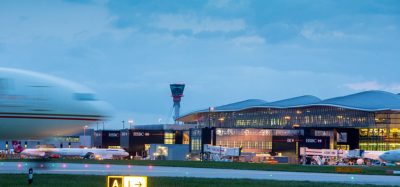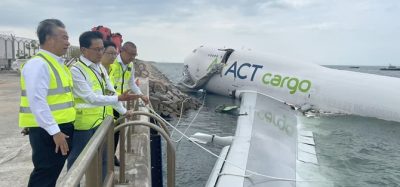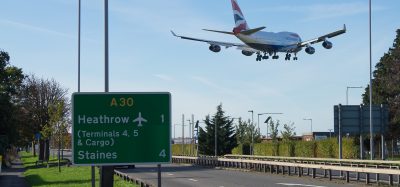Runway Friction Measurement Status
Posted: 7 February 2009 | Thomas J. Yager, Distinguished Research Associate, NASA Langley Research Center, Hampton, Virginia USA | No comments yet
With today’s technology, the measurement of ‘friction’ can be readily and accurately determined whether it be in a vehicle engine, wheel bearing, or of more immediate attention, the interface between a moving vehicle tire and the travelled pavement surface. In regards to ground vehicle and aircraft operations, the problem is not one of accuracy but one of timeliness. Mother Nature can change a dry, high friction pavement surface into an icy, low friction surface in a matter of minutes. The ground vehicle runway friction value measured 30 minutes earlier may have no relevancy to current pavement friction conditions. Hence the importance of giving pilots the time of the friction measurement as well as the actual value.
With today’s technology, the measurement of ‘friction’ can be readily and accurately determined whether it be in a vehicle engine, wheel bearing, or of more immediate attention, the interface between a moving vehicle tire and the travelled pavement surface. In regards to ground vehicle and aircraft operations, the problem is not one of accuracy but one of timeliness. Mother Nature can change a dry, high friction pavement surface into an icy, low friction surface in a matter of minutes. The ground vehicle runway friction value measured 30 minutes earlier may have no relevancy to current pavement friction conditions. Hence the importance of giving pilots the time of the friction measurement as well as the actual value.
The friction measurement usage by aircraft operators is further complicated by the number and variety of factors influencing the magnitude of friction at the tire/pavement interface including vehicle speed, wind direction and speed, tire pressure, type and tread design, pavement texture, surface contaminant type and amount, brake system efficiency and operator skill. It is truly a wonder that the travelling public is so successful in getting from point A to point B without incident.
The first figure provides some statistics on the various causes of aircraft accidents over a period from 1958 to 1993. Back then pilot braking reports of ‘good, fair, poor and nil’ were used to qualify the runway friction performance. Wet/icy runway conditions was one of the leading causes for overruns. Since then, much better and reliable friction measuring equipment has been developed and friction measurements between devices has been properly correlated for a given runway contaminant condition. Correlation of these ground friction measurements with aircraft braking performance has also been accomplished for a variety of adverse weather conditions. Unfortunately, runway friction conditions can deteriorate to the point where runway geometry is not sufficient to safely permit some aircraft landing and aborted takeoff manoeuvers. When this happens, the runway needs to be closed until contaminant removal is accomplished and acceptable friction levels are restored.
Join us live: Shaping the Next Generation of Hold Baggage and Air Cargo Screening
Join us live for an insightful webinar on 11th December at 14:00 GMT, in collaboration with Smiths Detection, as we explore the strategic balance of operational efficiency, regulatory compliance, and sustainability in high-volume security environments.
This session offers a focused look into future-proofing your security strategy.
Key learning points
- Cost Reduction: Strategies to minimize bag travel time while simultaneously reducing operational costs.
- Regulatory Roadmap: Insights into the next wave of regulatory changes and their impact on future investment decisions.
- Sustainable Systems: Practical approaches to building sustainability into security systems and lowering the total cost of ownership (TCO).
- Scalable Solutions: Real-world examples of scalable systems supporting current airport growth and preparing for tomorrow.
Register now for expert insights, case studies, and actionable strategies on operational efficiency!
Runway water, ice, or snow was a factor in more than 50 airplane accidents between 1998 and 2006. NASA Langley Research Center has partnered with the Federal Aviation Administration (FAA), Transport Canada (TC), and several European and Asian aviation authorities and organisations in the Joint Winter Runway Friction Measurement Program (JWRFMP). The main charter of the JWRFMP is to conduct research which aims to minimise accidents on hazardous runways. One approach is to identify the correlation between the different ground friction measuring devices and then determine how well they agree with aircraft braking performance.
Since the establishment of the JWRFMP in 1996, 40 weeks of actual aircraft and ground friction measuring vehicle tests have been conducted at test sites in the United States, Canada, Norway, Czech Republic, Germany, France and Japan. Over 500 participants from 70 organisations, representing 16 countries, have been actively involved in this effort. Ten different test aircraft and over 50 ground test vehicles have conducted 442 aircraft and over 20,000 ground vehicle test runs on dry, water, snow, ice and slush covered runways. Over 70 formal reports, papers, journal articles and proceedings have been published on the test results. From this substantial friction database, engineers have developed an international runway friction index (IRFI) to standardise friction reporting from different devices and to assist pilots in making critical takeoff and landing decisions. The American Society for Testing and Materials (ASTM) has approved an IRFI methodology standard, E2100 that defines procedure and accuracy requirements.
Transport Canada has their own runway condition reporting programme and during winter conditions, friction values obtained with an Electronic Recording Decelerometer (ERD) are reported as the Canadian Runway Friction Index (CRFI). This CRFI value forms part of the surface condition report and is included with the NOTAM information. These friction values are available to pilots and may be applied to the CRFI Tables of Recommended Landing Distances which are published as guidance material in the Canadian Aeronautical Information Publication and the Canada Flight Supplement.
Amendments have been approved and drafted to Canadian Aviation Regulations to standardise the reporting of CRFI values, including frequency and dissemination of inspections and reports, equipment to be used and its maintenance, and training of personnel at all Canadian airports. Acceptable correlation between the CRFI and the IRFI values has been documented. Another index developed earlier, called the international friction index (IFI), was used in the IRFI/CRFI correlation and the IFI procedure is documented in ASTM E1900.
The techniques and standards developed by JWRFMP have significantly reduced variance between ground friction measuring devices, offering the possibility of agreement between aircraft braking performance and the common scale developed for all devices. Future work should establish and enhance agreement between one of the indices and aircraft braking performance. Calibration and maintenance techniques used for each of the ground friction measuring devices need to be documented. And finally, implementation guidelines need to be developed and established worldwide with instructional and training materials to help the international aviation community understand and accept a common standard practice.
Aircraft braking friction coefficients, the best measure of aircraft braking performance, are calculated from the total aircraft deceleration during a braking run, taking into account other factors such as aerodynamic drag, idle or reverse engine thrust, contamination drag and runway longitudinal slope. Braking coefficients are normally dependent primarily on aircraft speed and runway friction. However, JWRFMP test results indicated that for winter contaminated surfaces, the braking coefficient during full anti-skid braking remained essentially independent of aircraft groundspeed for all aircraft tested. Therefore, aircraft braking coefficients could be plotted directly against runway friction indices to determine the extent of correlation and whether aircraft braking performance could be predicted using a runway friction index.
Most commercial and military pilots have access to and use some kind of guidance material for operating on slippery runways, and most apply some adjustment factor to the landing field length when conditions are less than dry on the runway. For landings on runways that are icy or covered with compacted snow, most pilots apply a 15% increase in landing distances, which is a requirement for many aircraft on wet runways. Pilots regularly adjust their flight plans to account for slippery runways
The current FAA Advisory Circular number 150/5320-12C entitled: “Measurement, Construction and Maintenance of Skid-Resistance Airport Pavement Surfaces” dated March 18, 1997, lists 8 different continuous friction measuring equipment (CFME) that are approved for use on runways. Table 3-2 in this AC provides friction level guidelines at 40 and 60 mph for each of these CFME’s at three classification levels – minimum, maintenance planning and new design/construction. Some of these CFME’s are shown in the attached photographs. Committee E17 of the American Society of Testing and Materials (ASTM) has developed and published standards on most of these CFME’s and committee members have provided to the FAA Airports an updated version of this table for review and approval.
In recent years, technology improvements, together with a better understanding of the tire/pavement friction interface, has enhanced the aircraft/runway environment with higher friction surface treatments, i.e. grooving, grinding, open graded overlays, shot blasting and pavement rubber deposit removal. Use of aircraft radial tire construction and better tread groove designs has helped, together with more efficient braking systems. More accurate weather reporting has given airport operators and airline dispatchers time to apply chemical applications to the runway surface to minimise icing and contaminant buildup. Improved snow removal equipment has also helped alleviate the safety risk.
With more encouragement from the regulatory agencies and less concern over possible litigation, collection and use of actual friction numbers from properly calibrated ground vehicles can help the pilot make his/her ‘Go’ or ‘No go’ decision. As a consequence, aircraft accidents due to loss in friction will be minimised and safety of aircraft operations in adverse weather conditions will be improved.
Stay Connected with International Airport Review — Subscribe for Free!
Get exclusive access to the latest airport and aviation industry insights from International Airport Review — tailored to your interests.
✅ Expert-Led Webinars – Gain insights from global aviation leaders
✅ Weekly News & Reports – Airport innovation, thought leadership, and industry trends
✅ Exclusive Industry Insights – Discover cutting-edge technologies shaping the future of air travel
✅ International Airport Summit – Join our flagship event to network with industry leaders and explore the latest advancements
Choose the updates that matter most to you.
Sign up now to stay informed, inspired, and connected — all for free!
Thank you for being part of our aviation community. Let’s keep shaping the future of airports together!

















